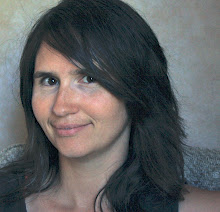 The only thing difficult about this pattern is trying to see the stitches as you knit. It's not meant to keep you warm, but to be a piece of eye candy, so that's why I opted out of using a carrier yarn (and therefore the reason the knitting goes slowly). Unfortunately, Bernat has discontinued this yarn, called Bling Bling (scarf shown in Brilliant Blue colourway), but you can still pick up some small batches of it on Ebay. All I did was cast on 16 stitches on 8.00 mm needles and knit in stocking stitch (aka stokinette stitch) until the entire skein was very close to being used up, then cast off & wove in ends. what could be easier?
The only thing difficult about this pattern is trying to see the stitches as you knit. It's not meant to keep you warm, but to be a piece of eye candy, so that's why I opted out of using a carrier yarn (and therefore the reason the knitting goes slowly). Unfortunately, Bernat has discontinued this yarn, called Bling Bling (scarf shown in Brilliant Blue colourway), but you can still pick up some small batches of it on Ebay. All I did was cast on 16 stitches on 8.00 mm needles and knit in stocking stitch (aka stokinette stitch) until the entire skein was very close to being used up, then cast off & wove in ends. what could be easier?Well, I'll tell you :) Add a carrier yarn along with the Bling Bling (I used Lionbrand Homespun in Williamsburg). I did this one in knit stitch only, which also added to the bulk, but I wanted a really warm scarf for my daughter. Still done with a 16 stitches cast onto 8.00 mm needles, but it is way easier to find those stitches - I think it took me under two hours to finish it, with interuptions from my kids, and I'm no speedy knitter.



